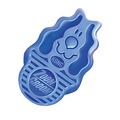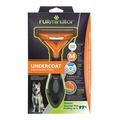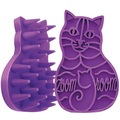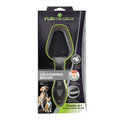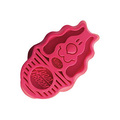If you’ve got cats and dogs, you’ll probably be all too aware of the fact they’re shedding at the moment.
Shedding is connected to daylight hours, with increased sun stimulating the hair to grow, shed and replace itself. If you have house cats, you may find that shedding isn’t too much of a problem as they are affected slightly less by daylight changes.
But what can be done to manage and reduce shedding, to help keep your pet comfortable and well-conditioned, and help keep your house fuzz-free?
- Groom often. Despite what you might think, short-haired breeds are often higher shedders, as their hairs have a much shorter life cycle and therefore replace themselves at a faster rate. All breeds shed to an extent, even ‘non-shedding’ breeds will shed a little bit, and hairless breeds will shed skin instead of hair.
It is important to remove the loose hair frequently to aid the hair renewal process and stimulate the hair follicle and skin. This encourages better circulation and also removes dandruff and debris. Not only this, but regular grooming helps enhance condition and improve coat shine, for a healthy-looking pet. By paying close attention to the skin and coat, it will allow you to notice problems early, including cases of dry skin and irritation, as well as the presence of unwanted parasites like fleas and ticks. Hairball problems will also be minimised as there will be less loose hair for your cat to ingest.
- Supplement. If you’re concerned about the health of your pet’s skin and coat, it is important to consult your vet. It may be that your pet has a food or environmental allergy which is causing irritation and itching. In some cases, a dull coat can also indicate illness, so it is always worth seeking advice. It may be that part of the recommended treatment is involving a supplement into your pet’s diet, such as one containing high levels of Omega oils. If you need advice on choosing a suitable supplement, please get in touch and the team will guide you through it!
- Nail clipping. While this isn’t strictly related to shedding, keeping an eye on your pet’s claws is an important aspect of grooming. If you find nail clipping problematic and not something your pet tolerates very well, your vet can always assist. In the absence of a vet, however, we have information on nail clipping at home, which you might find useful.
If you have found this article helpful, you might be interested to read our other related articles: Treat your dog to a full grooming session, Grooming is important for many pets, Do cats need bathing?, Dandruff in dogs: how to treat a scurfy coat, Top tips for dog grooming, Basic grooming for cats.
If you need advice on grooming, please don't hesitate to get in touch with the team by emailing [email protected].
[Shop Dog Grooming, Cat Grooming, Skin & Coat Supplements, Fleas, Ticks & Mites]
Written by: Aaron



